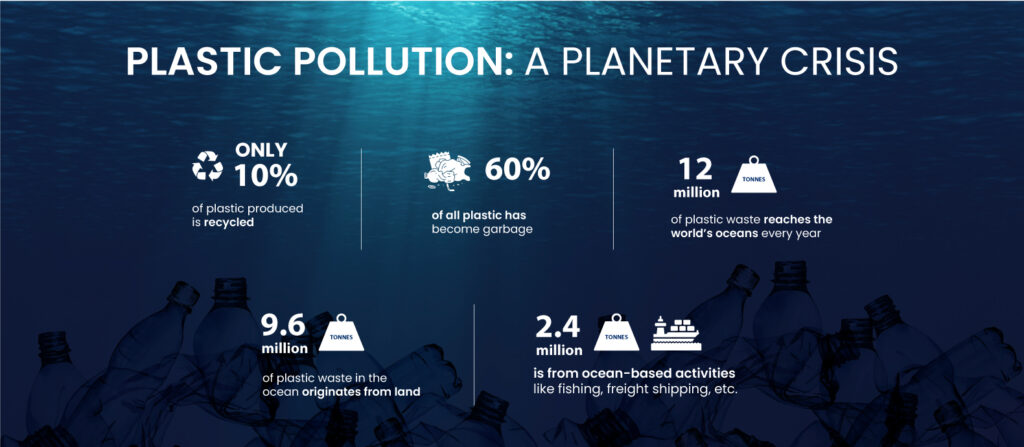Bakelite, the first fully synthetic plastic, was formulated and patented in 1907 by Leo Bakeland, using formaldehyde and phenol. It was swiftly adopted by the manufacturing sector for its affordability, durability, and versatility. Several new, improved plastics were developed in the following decades, and production grew exponentially to meet the rising demand.
Ironically, the same qualities that make plastic so convenient also make it a serious ecological threat. Plastics break down very gradually – some can take thousands of years, meaning all the plastic that has ever been discarded (estimated at over 6 billion tonnes and growing), remains in the environment today and will linger there long after we are gone. It will eventually break down into smaller and smaller particles called microplastics, which are light enough to become airborne and small enough to be inhaled. Microplastics have been detected all over the world, including in extremely remote regions like Antarctica.
Solving the problem of plastic pollution is a Herculean task, requiring a vast amount of resources, determination, and cooperation from all levels of society on a global scale. Governments and corporations have acknowledged the crisis, and are developing technologies and policies to tackle the problem. Meanwhile, environmental agencies are working around the clock to remove plastic waste from the world’s oceans, rivers, and forests. As individuals, we can make a considerable difference by eliminating single-use plastic from our daily lives, and participating actively in community clean-up activities.




